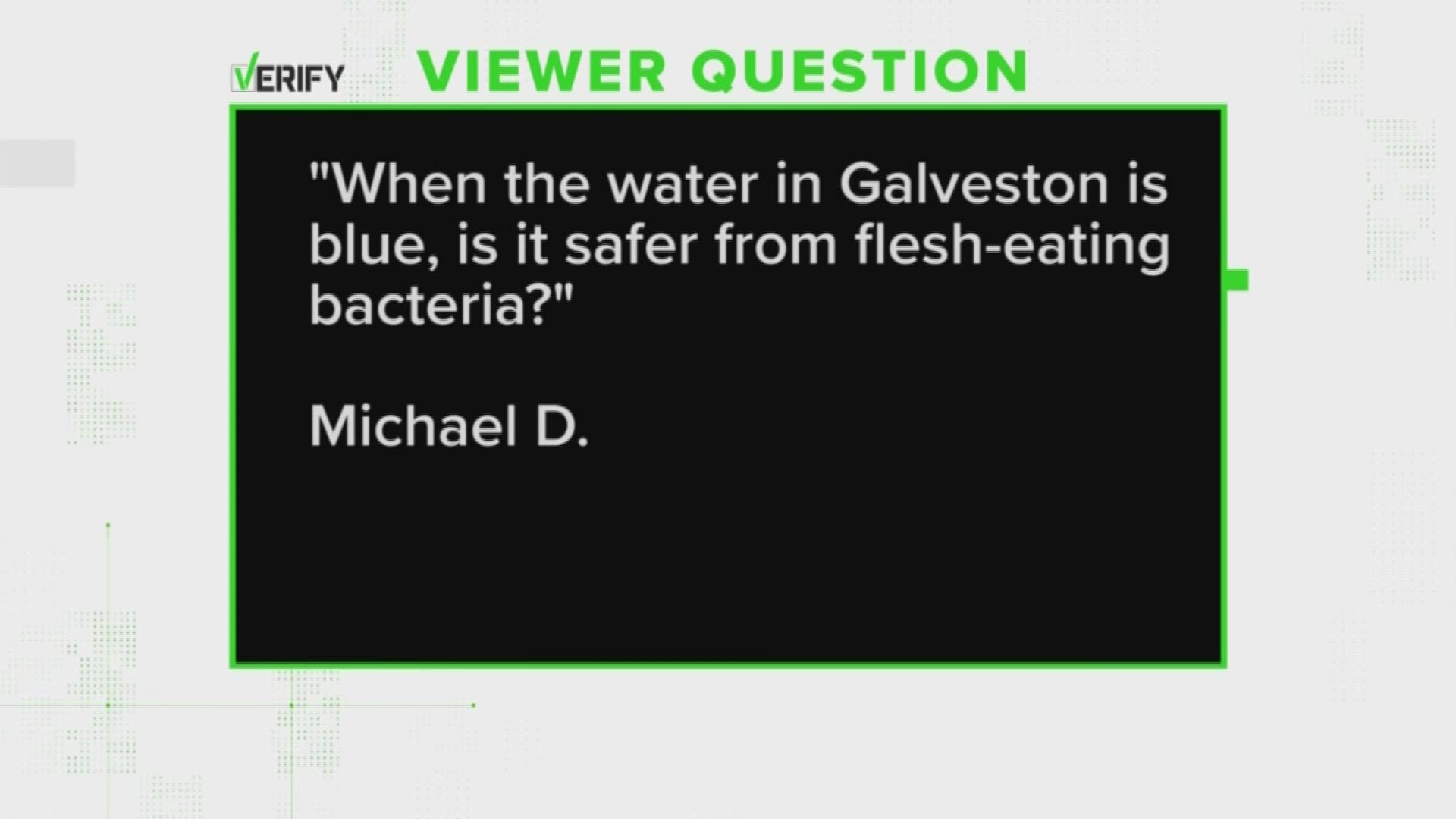GALVESTON, Texas — Blue water means a big jump in people flocking to Galveston and other beaches along the Texas Gulf Coast, but does it also mean a change in the levels of flesh-eating bacteria?
That’s what Michael D. wanted to know. He emailed our Verify team asking, “When the water in Galveston is blue, is it safer from flesh eating bacteria?”
To get answers, KHOU spoke with Dr. Philip Keiser, Local Health Authority for Galveston County.
Dr. Keiser says the water’s color has no impact on how much flesh-eating bacteria, known as vibrio, is in the water. He says it also does not put someone at more or less risk for any other health concerns.
Dr. Keiser says the Gulf of Mexico turns blue when currents or winds change and move out sediment from nearby rivers, or a lot of rain dilutes that sediment.
RELATED: Central Texas girl, 10, dies after contracting brain-eating amoeba infection while swimming
While water color may not influence the amount of flesh-eating bacteria, water temperature does. Vibrio is more likely to grow when the water gets warmer. That’s why the CDC says most infections happen between May and October.
KHOU can verify the water in Galveston, along with the rest of the Gulf Coast, is neither safer nor more dangerous just because the water turns blue.
Have questions for KHOU to verify? Reach out on Facebook, Twitter, or email at verify@khou.com.
ALSO POPULAR ON KHOU.COM

